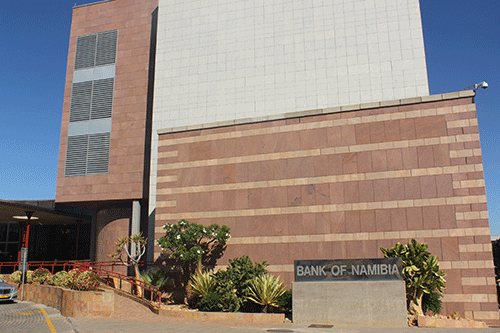The Bank of Namibia (BoN) monetary policy committee (MPC) is expected to make the fourth monetary policy announcement of the year today at the bank’s Oshakati branch.
Namibian consumers who rely on debt to survive have had salt rubbed on their wounds since last year in the form of tireless repo rate hikes.
BoN raised the repo rate by 50 basis points to 7.75% in June 2023, bringing the prime lending rate to 11.50%.
The repo rate is defined as the lending rate offered by a central bank to commercial banks for its short-term funding requirements. The commercial banks then pass on the interest rate levied by the central bank to their consumers through interest charges on loans.
Economics lecturer at the Namibia University of Science and Technology (Nust) Lameck Odada said the central bank may wish to keep the repo rate at 7.75%, but, at the same time, may be forced to increase it by between 25-50 basis points to maintain the Namibian dollar’s parity with the South African rand where the repo rate is now at 8.25%.
He urged Namibians to make the most of their savings while cutting down on expenses.
“Cutting back on your daily expenses can have a significant influence in addition to securing the best rates on your credit cards, loans, and savings accounts. Determine which areas have the largest monthly costs and try to cut them. For instance, it can make sense to commute more frequently utilising public transportation if most of your money is spent on petrol,” Odada advised.
The economist added that the greatest approach to fighting inflation might not be to leave money sitting in low-return financial instruments.
“Mutual funds and the stock market are some of the standard go-to investing instruments for this reason. But before making the investment, just as with any other, you must have a solid understanding of what you are doing,” said Odada.
Capricorn Asset Management chief economist Floris Bergh expects no change in interest rates today.
“Inflation is down, credit growth is weak and other central banks have started to pause their rate-hiking campaigns. All that we as Namibians can do is to revise our spending habits as much as possible and to avoid expensive debt in a rising interest rate environment,” advised Bergh.
Another economist, Omu Kakujaha-Matundu said BoN might take a cue from the South African Reserve Bank (SARB) and keep the repo rate steady, with a 50 basis points difference from the SARB rate. He premised this on BoN’s past records of successfully taming inflation.
“Alternatively, they could try to minimise the difference to the SARB rate and increase by 25 basis points. Namibians had been through this ‘school of hard knocks’ since the advent of Covid-19. They had tightened the belt more and more.
My advice is, despite the hardships, to try to keep out of bad debt. Try a side job too. You won’t make ends meet on your one stream of income. And the same applies to businesses as well,” said the veteran economist.
BoN governor Johannes !Gawaxab, at the last announcement in June 2023, urged consumers to change their spending behaviours due to unfavourable interest rate environment.
!Gawaxab, at the time, stated the increase was to continue safeguarding the one-to-one link between the Namibian dollar and the South African rand. It was simultaneously aimed at further containing inflationary pressures, stemming their associated second-round effects and anchoring inflation expectations.
– mndjavera@nepc.com.na


